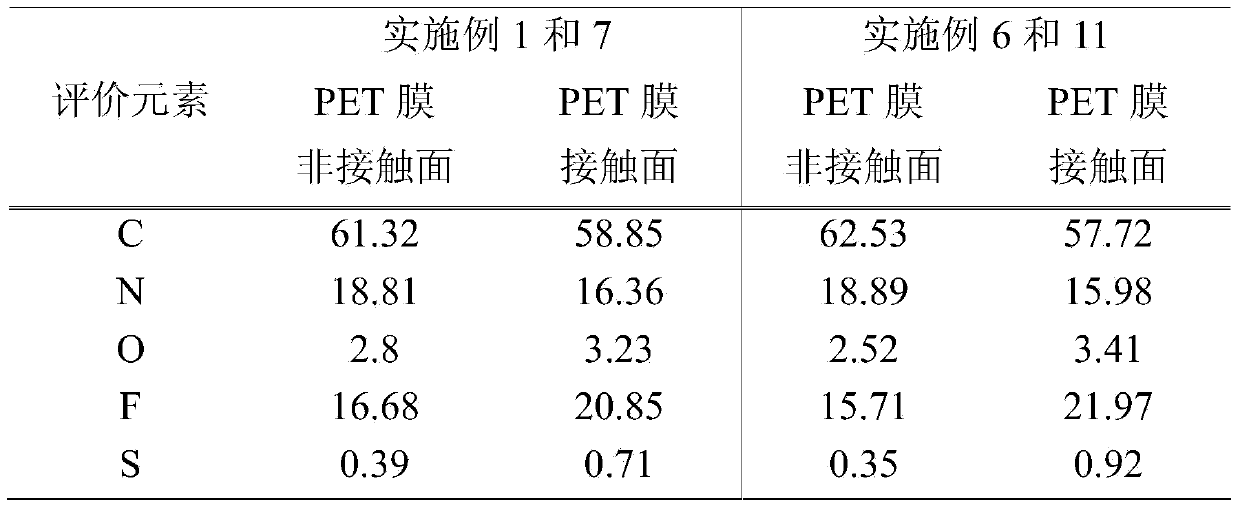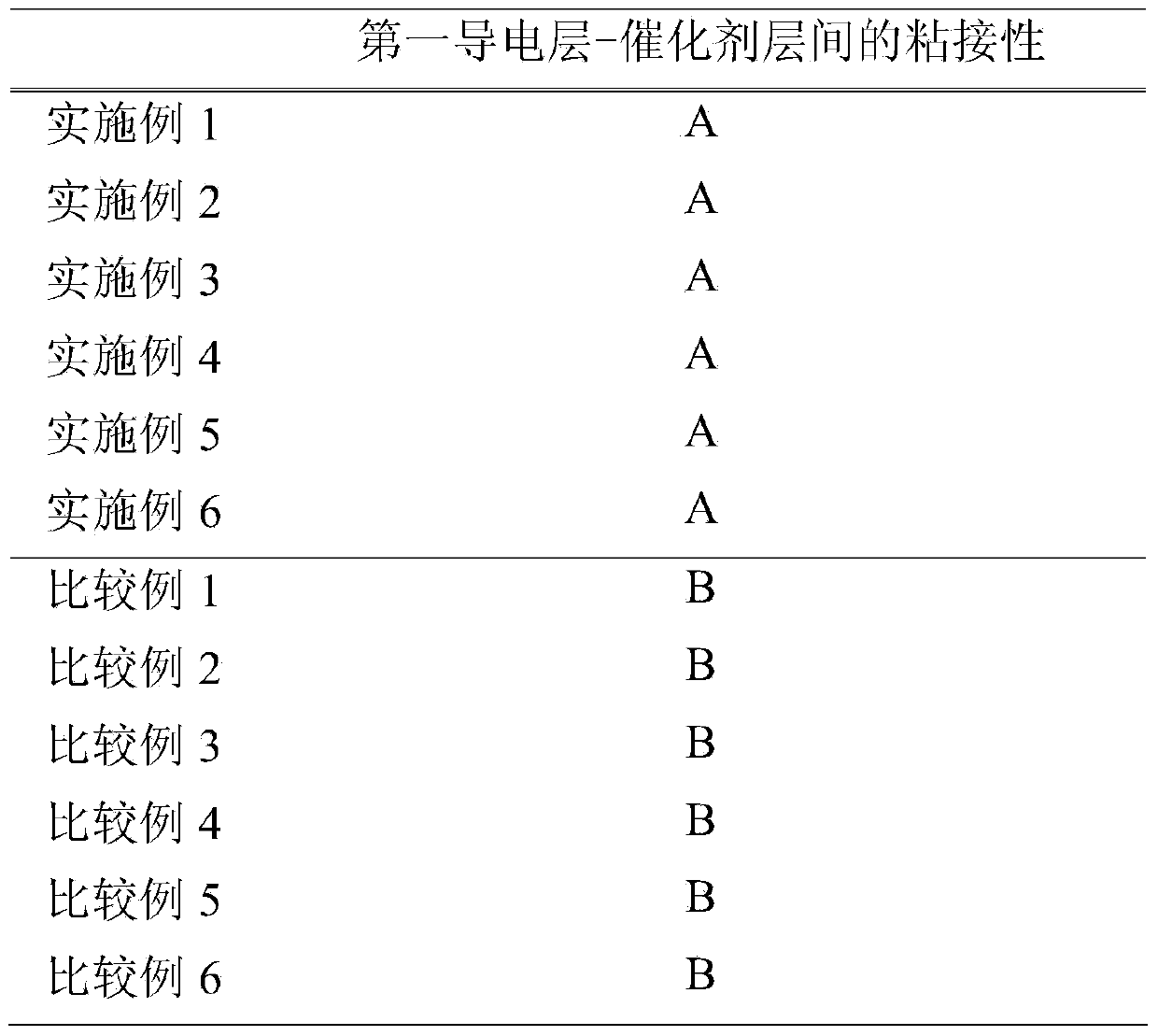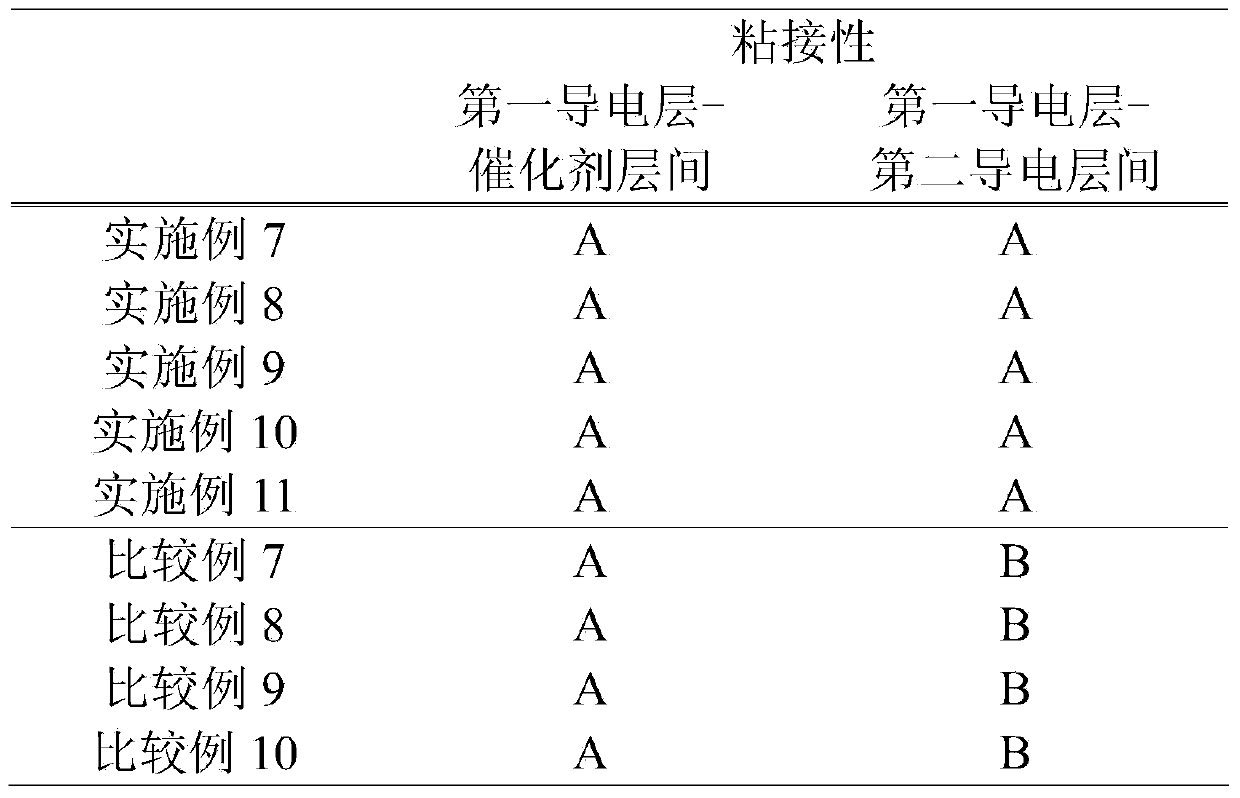Membrane-electrode assembly for fuel cell, manufacturing method thereof, and solid polymer fuel cell using membrane-electrode assembly
A technology for electrode assemblies and fuel cells, which is applied in solid electrolyte fuel cells, fuel cell components, fuel cells, etc., and can solve problems such as unstable battery performance, deterioration, poor adhesion between conductive porous layer and catalyst layer, etc.
- Summary
- Abstract
- Description
- Claims
- Application Information
AI Technical Summary
Problems solved by technology
Method used
Image
Examples
Embodiment 1
[0160] (i) The first conductive layer
[0161] Disperse 100 parts by weight of conductive carbon particles, 50 parts by weight of fluororesin, 75 parts by weight of conductive carbon fiber (1), 1250 parts by weight of polymer (1) (62.5 parts by weight of solid content), 25 parts by weight of dispersant 350 parts by weight and 350 parts by weight of water were dispersed to prepare a paste composition for forming a first conductive layer. The paste composition for forming a first conductive layer was applied on a polyethylene terephthalate (PET) film on which a release layer was formed using an applicator so that the thickness became about 50 μm. Regarding the viscosity of this paste composition, the shear viscosity is a value of about 150 mPa·s at a shear rate of 1000 (1 / s). The method of measuring the viscosity of the paste composition was measured using hysica MCR301 manufactured by Anton Paar (as a jig, a conical jig with a diameter of 50 mm and an angle of 1° was used). I...
Embodiment 2
[0165] (i) The first conductive layer
[0166] Disperse 100 parts by weight of conductive carbon particles, 50 parts by weight of fluororesin, 75 parts by weight of conductive carbon fiber (1), 1250 parts by weight of polymer (1) (solid content 62.5 parts by weight), polymerize A paste composition for forming a first conductive layer was prepared by dispersing 200 parts by weight of the substance (2) (100 parts by weight of solid content), 25 parts by weight of a dispersant, and 350 parts by weight of water. This paste composition for first conductive layer formation was applied on the PET film on which the release layer was formed using an applicator so that the thickness became about 50 μm. Regarding the viscosity of this paste composition, the shear viscosity was a value of about 130 mPa·s at a shear rate of 1000 (1 / s). Then, it dried for about 15 minutes in the drying oven set at 95 degreeC, and produced the 1st conductive layer.
[0167] (ii) Membrane-electrode assembly...
Embodiment 3
[0170] (i) The first conductive layer
[0171]Disperse 100 parts by weight of conductive carbon particles, 50 parts by weight of fluororesin, 75 parts by weight of conductive carbon fiber (1), 1250 parts by weight of polymer (1) (solid content 62.5 parts by weight), polymerize A paste composition for forming a first conductive layer was prepared by dispersing 200 parts by weight of the substance (2) (100 parts by weight of solid content) and 350 parts by weight of water. This paste composition for first conductive layer formation was applied on the PET film on which the release layer was formed using an applicator so that the thickness became about 50 μm. Regarding the viscosity of this paste composition, the shear viscosity was a value of about 130 mPa·s at a shear rate of 1000 (1 / s). Then, it dried for about 15 minutes in the drying oven set at 95 degreeC, and produced the 1st conductive layer.
[0172] (ii) Membrane-electrode assembly
[0173] The first conductive layer ...
PUM
| Property | Measurement | Unit |
|---|---|---|
| particle size | aaaaa | aaaaa |
| particle size | aaaaa | aaaaa |
| particle size | aaaaa | aaaaa |
Abstract
Description
Claims
Application Information
 Login to View More
Login to View More - R&D
- Intellectual Property
- Life Sciences
- Materials
- Tech Scout
- Unparalleled Data Quality
- Higher Quality Content
- 60% Fewer Hallucinations
Browse by: Latest US Patents, China's latest patents, Technical Efficacy Thesaurus, Application Domain, Technology Topic, Popular Technical Reports.
© 2025 PatSnap. All rights reserved.Legal|Privacy policy|Modern Slavery Act Transparency Statement|Sitemap|About US| Contact US: help@patsnap.com



